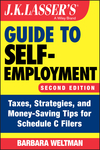Converting to a Roth IRA
Starting in 2010, millions of Americans previously barred from converting a traditional IRA to a Roth IRA because of the income limitation are now eligible to do so. The $100,000 modified adjusted gross income cap on eligibility to convert, as well as the requirement that married persons file joint returns, have been eliminated; anyone is eligible to convert to a Roth IRA in 2010. The question is: Should you convert and what are the tax implications for doing so.
Should You Convert?
Having a Roth IRA gives you the opportunity to build up tax-free income for the future. Once the account has been open for at least five years and withdrawals begin after 59û or on account of disability, there is no tax on the earnings (a limited withdrawal for first-time homebuyers is also allowed). You can take withdrawals of your contributions at any time; because they are made with after-tax dollars, these withdrawals are tax free.
You can use a Roth IRA to create a substantial legacy for your heirs. Unlike traditional IRAs and qualified retirement plans, there are no required minimum distributions during your lifetime. Beneficiaries who inherit Roth IRAs must draw down the account; all of their withdrawals usually are tax free.
Cost of Conversion
In order to convert, you must include in gross income the income that would have resulted had you simply taken a distribution. For example, if you convert $25,000 from a traditional IRA to a Roth IRA and the traditional IRA had no after-tax contributions, then all of the $25,000 is included in gross income.
If you convert a traditional IRA that has some after-tax contributions, you must allocate the portion of the distribution that is taxable. For example, if you had a single traditional IRA of $25,000 to which you had made an after-tax contribution of $4,000, then 84% of the conversion, or $21,000, is taxable (16% represents the after-tax contributions to the traditional IRA and is not taxed).
In order to make a conversion, you need to have sufficient cash on hand to pay the taxes that result from this action.
Other tax issues. There may be state income tax on the conversion. However, a few states have no income tax; others may exempt some or all of IRA distributions from their income tax.
Special Conversion Rules For 2010
If you convert in 2010, there is a special rule for federal income tax purposes. Half of the conversion income is reported in 2011 and half in 2012 unless you opt to report it all in 2010. This deferral opportunity appears to be a good thing. However, it should be kept in mind that the income tax rates for 2011 and 2012 are unknown at this time. If the “Bush tax cuts” are allowed to sunset as scheduled after 2010 as they are supposed to do, then rates will be higher. If a health care reform package includes surcharges on high income individuals, then rates for these taxpayers will certainly be higher.
It may make sense for individuals who convert to a Roth IRA in 2010 to request a filing extension to October 15, 2011. This will provide more time to see what tax rates will be for 2011 and 2012.
Strategies
You do not have to convert all of your IRA. You can convert a little each year to the extent you want (perhaps to the extent of the funds you have to cover the income taxes on the conversion).
You can convert a 401(k) or other qualified retirement plan directly into a Roth IRA (you don’t have to first transfer funds into a traditional IRA and then convert). However, check with the plan to see whether you can make a transfer; usually this option is available only when you leave the company or retire.
You can convert and make an annual contribution to a Roth IRA. For 2010, the contribution limit remains $5,000, plus an additional $1,000 for those age 50 or older by the end of the year. However, there continues to be modified adjusted gross income limits on making annual contributions to a Roth IRA. A full contribution is allowed for 2010 for singles with MAGI up to $105,000 and for joint filers with MAGI up to $167,000. A partial contribution is allowed for singles with MAGI between $105,000 and $120,000, and for joint filers with MAGI between $167,000 and $177,000.
Residential rental property
Real property in which 80% or more of the gross income is from dwelling units. Under MACRS, depreciation is claimed over 27.5 years under the straight-line method.



